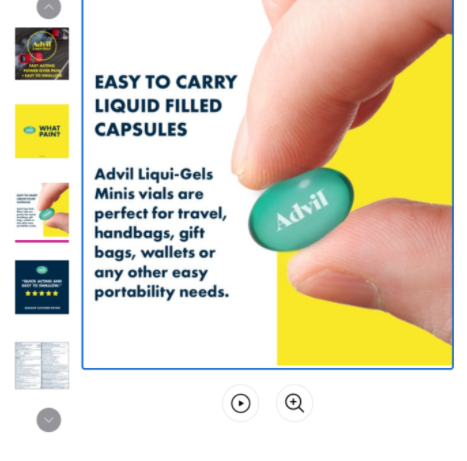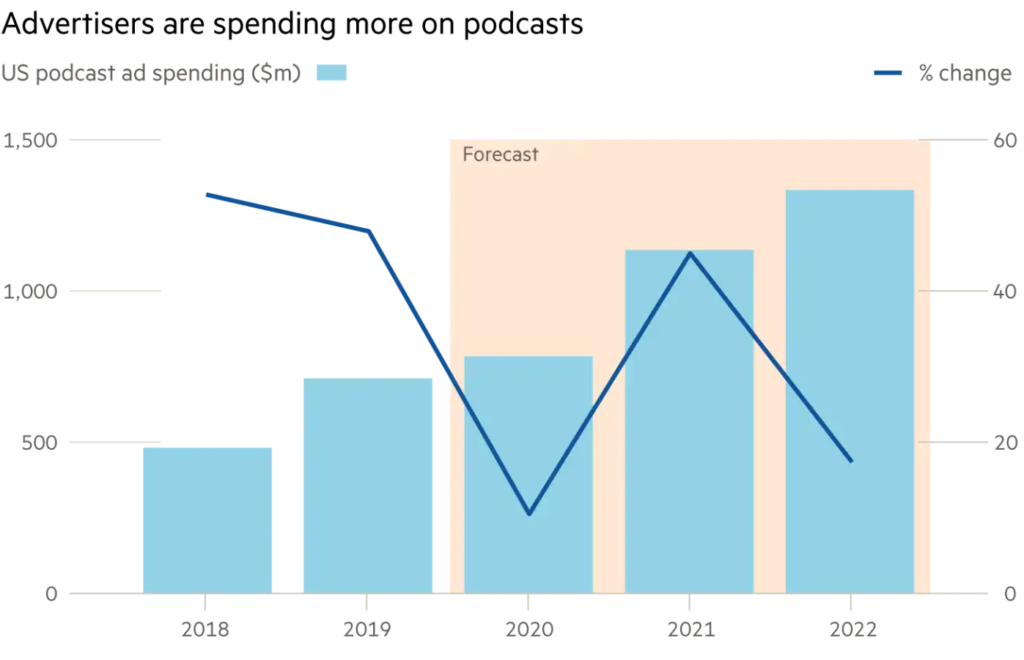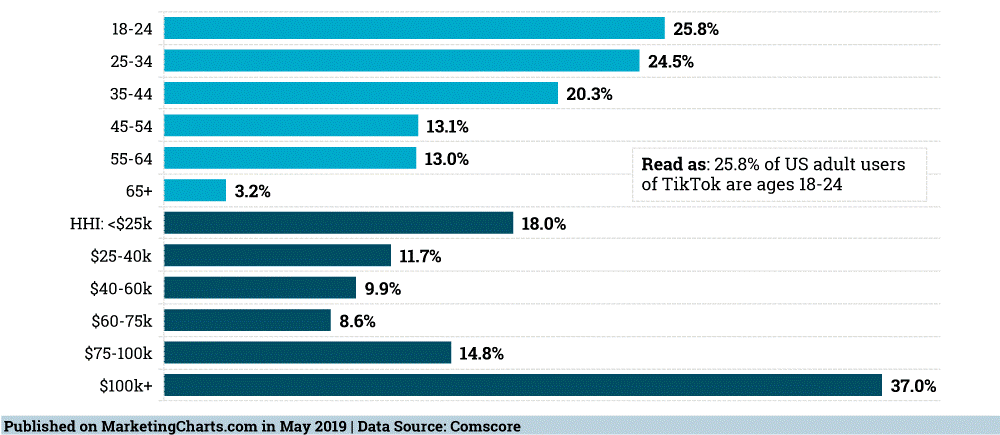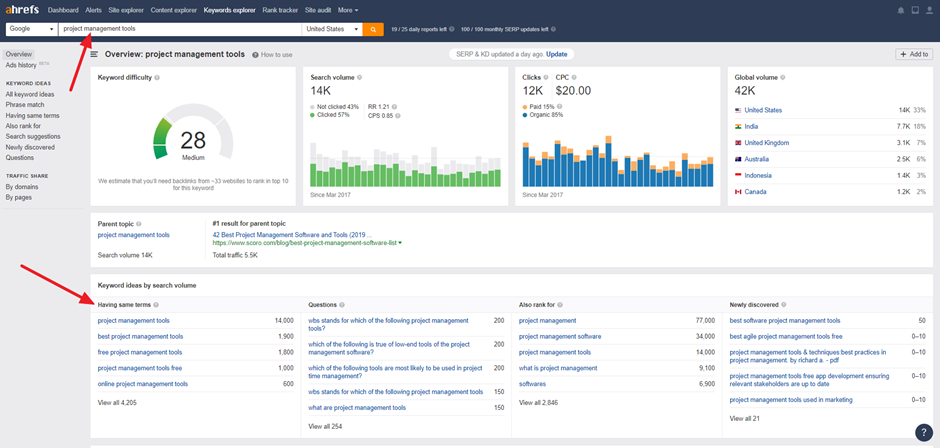What is Amazon Attribution?
Amazon Attribution is an advertising and analytics measurement solution that gives marketers insight into how their non-Amazon marketing channels across search, social, video, display, and email impact shopping activity and sales performance on Amazon. With these insights, you can discover new ways to grow your business on Amazon by optimizing experiences off Amazon.
Amazon Sales Attribution is when Amazon assigns credit for a sale to a specific campaign. For example, when a user clicks on one of your ads and buys a product within a certain time period such as 7 or 14 days, the “sale” is attributed to your campaign.
Another facet of how Amazon attributes sales involves Discount Coupon and Promo Code Discount Attribution. When there is a special promotion through either Seller Central or the Advertising console, attribution is treated in the same manner. Any discounts that are applied before the customer enters the checkout phase are applied and taken out of the attributed ad revenue. But if the discount was applied during the checkout process, Amazon still reports the full retail price as the sale.
Amazon Attribution is available in:
- North America: USA, Canada
- Europe: UK, Germany, France, Italy, Spain
What’s an Attribution Tag?
Attribution tags are parameterized URLs that measure click-throughs and attribute conversions and sales of their products on Amazon. Hence, it is essentially a link to your product listing that Amazon can track. You can generate that tag (or URL) in your Amazon Attribution account.
Then you simply place that link in your ad, blog post, email, or whatever, just like you would a regular link to get people to your listing. Except now, when anyone clicks on it, Amazon can track them and let you know a number of actions that they take.
Amazon Attribution Tracking Platforms
While it is important to note that Amazon tracks attribution differently depending on the platform you’re using, there are three different dashboards you can use to advertise on Amazon.
- Seller Central, also known as 3P, or the dashboard third-party sellers use.
- Advertising Console, formerly Amazon Marketing Services (AMS), or the dashboard vendors use (1P/first-party sellers).
- Amazon DSP, formerly the Amazon Advertising Platform (AAP), run by the Amazon Media Group (AMG). Note: Amazon DSP is offered through AMG’s managed service. It is also available through select agency partners as a self-service tool or directly to top-tier, large budget advertisers.
How does Amazon Attribution Work?
With on-demand reporting, Amazon attribution allows advertisers and brands to uncover the insights needed to optimize their media campaigns and grow product sales. According to Amazon, this new feature also provides a comprehensive view into how each marketing tactic contributes to a brand’s shopping activity on Amazon.
- Measurement: Understand the impact of your cross-channel digital marketing activities.
- Optimization: Make in-flight optimizations using on-demand advertising analytics to help maximize impact and ensure efficiency.
- Planning: Learn which of your strategies maximize return on investment and drive sales in order to build future marketing plans.
How advertisers can use Amazon Attribution
Customers discover products and engage with brands across more touchpoints than ever before. While Amazon Advertising helps drive consideration for your brand and products across some of these touchpoints, we know there are a number of non-Amazon channels that also play key roles in the shopping journey.
With Amazon Attribution measurement, you can gain visibility into how these non-Amazon touchpoints help customers discover and consider your products on Amazon. Using these advertising analytics and insights, you can optimize and plan your digital strategy based on what you know resonates with your customers and drives value for your brand on Amazon.
- Understanding which non-Amazon strategies are helping you reach your goals using Amazon conversion metrics to assess cross-channel performance.
- Accessing full-funnel advertising analytics, from awareness to consideration to purchase, with metrics including clicks, detail page views, Add to Carts, and sales.
- Discovering new sales opportunities by learning more about how shoppers engage with your brand on Amazon.
- Getting insight into campaign performance in-flight with Amazon conversion metrics available on-demand for your campaigns.
- Growing return on investment by ensuring your marketing campaigns are efficiently and effectively driving value for your brand on Amazon.
Therefore, to use Amazon Attribution, you must be a US Amazon vendor with active vendor code(s) or a US Amazon seller brand owner (brand registered) and must be advertising in channels outside of Amazon.
What metrics are available in Amazon Attribution?
The key metrics Amazon Attribution reports include:
- Standard traffic metrics – impressions and clicks
- Amazon conversion metrics – detail page views, Add to Carts, and purchases.
Who Should Use Amazon Attribution?
How to Create an Amazon Attribution Tag
Once you’ve set up your Amazon Attribution account it’s pretty simple to generate your first Attribution Tag and start tracking your off-Amazon marketing efforts.
Step 1: Click on the advertiser name you want to create the tag for.
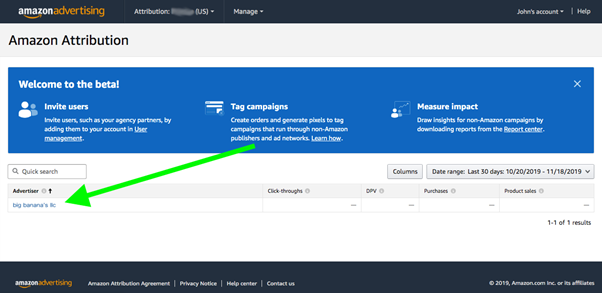
Source: Amazon
Step 2: Hit the “New Order” button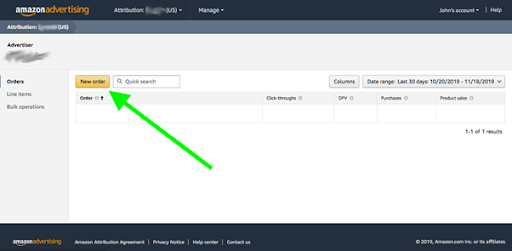
Source: Amazon
Step 3: If you’re creating a link for a Google Ad, choose “Upload A File” and follow the instructions. If you’re creating a link for anywhere else, choose “Set up an order.” Afterward, select the product you want to link to from the list of your products below by pressing “Add” next to it.
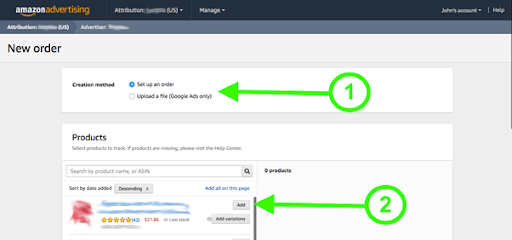
Source: Amazon
Step 4: Scroll down, give the order (Attribution Tag) a name and ID so you know exactly which one it is, and hit “Continue to line items.”

Source: Amazon
Step 5: From the publisher drop-down menu, you can choose exactly where you plan to place your link. There are hundreds of options, but for this example we choose Facebook.

Source: Amazon
Step 6: Go to Amazon, search for your product, click on the listing, copy the URL from your browser, paste it into the Click-through URL box, and hit the yellow “Create” button.
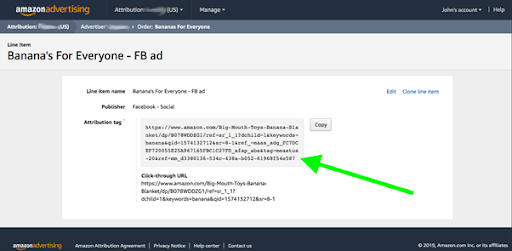
Source: Amazon
In completing these steps, you have now created your Amazon Attribution tag. Therefore, to track anyone that clicks that link, simply copy and paste that link into your Facebook ad.
Brands Can Use Amazon Attribution to:
- Increase their Amazon sales velocity
- Reach customers wherever they choose to browse and direct them to a highly converting detail page or Store backed by Amazon Prime shipping and customer service benefits
- Generate new demand through social and prospecting channels (Facebook / Instagram)
- Endemic platform controls facilitate brand safety control
- Deploy consistent, brand-differentiating creative assets across digital platforms and drive customers back to a custom Amazon landing page or Store
- Increase the pool of potential shoppers to re-engage with DSP retargeting
- Launch product support.
What is the Halo Effect?
This is all about brand bias. It is the tendency for positive impressions of a brand or product in one area to positively influence a shopper’s opinion or feelings in other areas. It is a term for a consumer’s favoritism toward a line of products due to positive experiences with other products by the same manufacturer/brand. The Halo Effect can be used by advertisers to alter the consumer’s perception of their brand and/or their products.
Like Amazon’s Advertising Console, for Vendor Central brands, Brand Halo uses a 14-day window for its measurement. Matter-of-factly, this measurement takes sales and attribution a step further because the Brand Halo represents the influence of ads beyond the promoted Amazon Standard Identification Numbers (ASINs). In other words, measuring Brand Halo sales can provide an understanding of how well campaigns drive sales across a brand’s entire catalog.
While it’s not a single factor that is responsible for a halo effect, below are the most common elements or incrementality factors associated with Amazon’s advertising halo:
- Amazon retargeting
- Off Amazon sales from price checking
- Amazon Best Seller (BSR) improvement
- Items added to cart but not purchased
- Items saved for a later date purchase
- Required exposure for buy to make decision
- Life-time-value (LTV) of new customers acquisition
- Maintaining opportunity in branded search
- Sales outside of the attribution window
- Wishlist items.
How to Measure the Halo Effect with Amazon Attribution?
Across the board, all the units in the Advertising Console work on Amazon’s Brand Halo attribution, whereas in Seller Central, only Sponsored Brand Ads work on Brand Halo. While attribution poses challenges for advertisers, ads you place for certain products in order to increase their sales. However, the revenue generated does not necessarily result from the sale of the advertised products, but also partly from the sales of other articles by the brand. In some cases, they can be coming from completely different product categories. This makes it more difficult to measure success.
If you are advertising a product sold on Amazon, there are two types of reporting metrics or values to measure your return on ad spend: Product Sales and Total Sales. Product Sales only tracks the ASINs you provide to Amazon for conversion tracking purposes. There is NO Brand Halo attribution applied here. Amazon currently has to manually approve each list of ASINs you provide to them to verify they are indeed yours. On the other hand, Total Sales tracks sales on the ASINs provided to Amazon for conversion tracking AND all Brand Halo sales from the brand names included in the tracked ASIN list.
However, the following are techniques to measure the Halo Effect with amazon attribution:
- If you have varied prices, you should have a good idea of which products are being sold as Halo.
- By dividing the units by Total Sales, you can also see if people are typically buying a more expensive/less expensive product.
- Set up unique Orders per traffic channel at a minimum.
- Include all products in Orders to capture maximum exposure.
- Since you can only track a max of 1000 products per order, so if your catalog is larger, use the Total Sales metrics which encompass the entire catalog.
- Use the Total Sales metric to start your measurement since it doesn’t require you to stay on top of products being added or subtracted.
- Use line items to segment your tracking to mirror how your ad campaigns and targeting are set up (ie by channel, B vs NB, targeting tactic, etc).
- Use keyword (KW) level tracking for maximum granularity.

